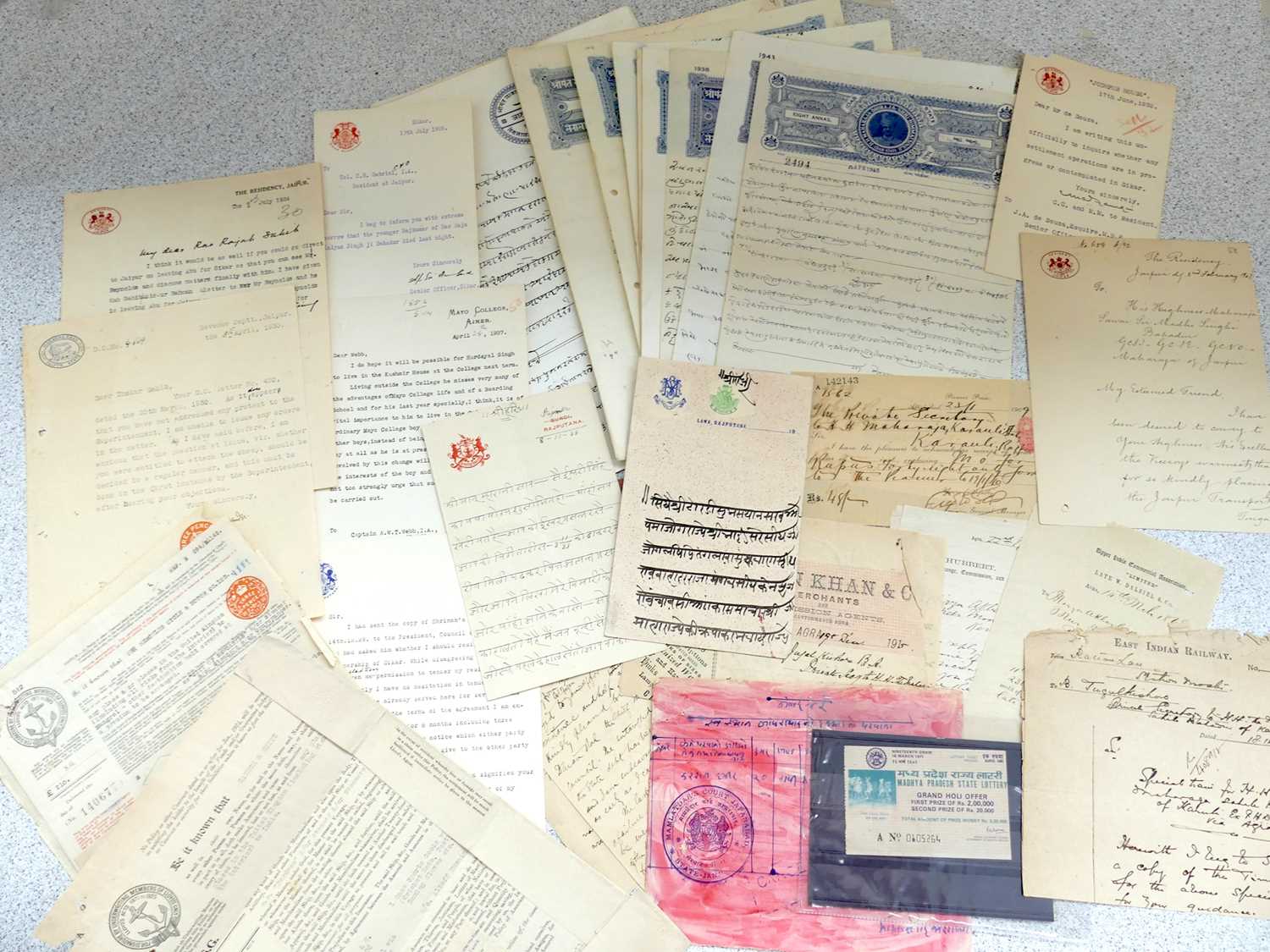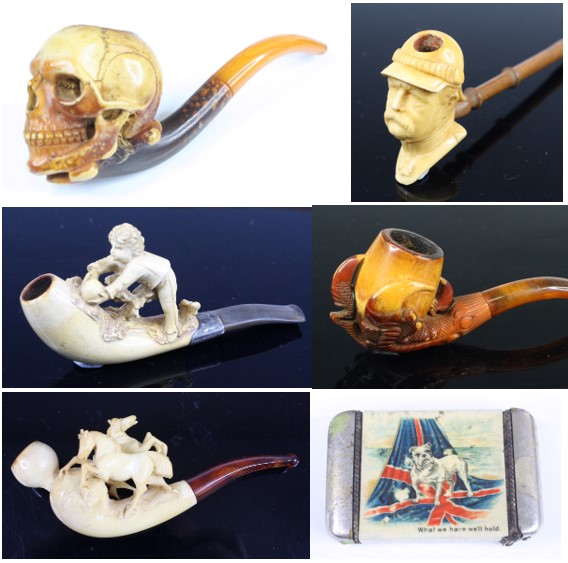Jane Austen's brother, the Napoleonic Wars and the East India Company
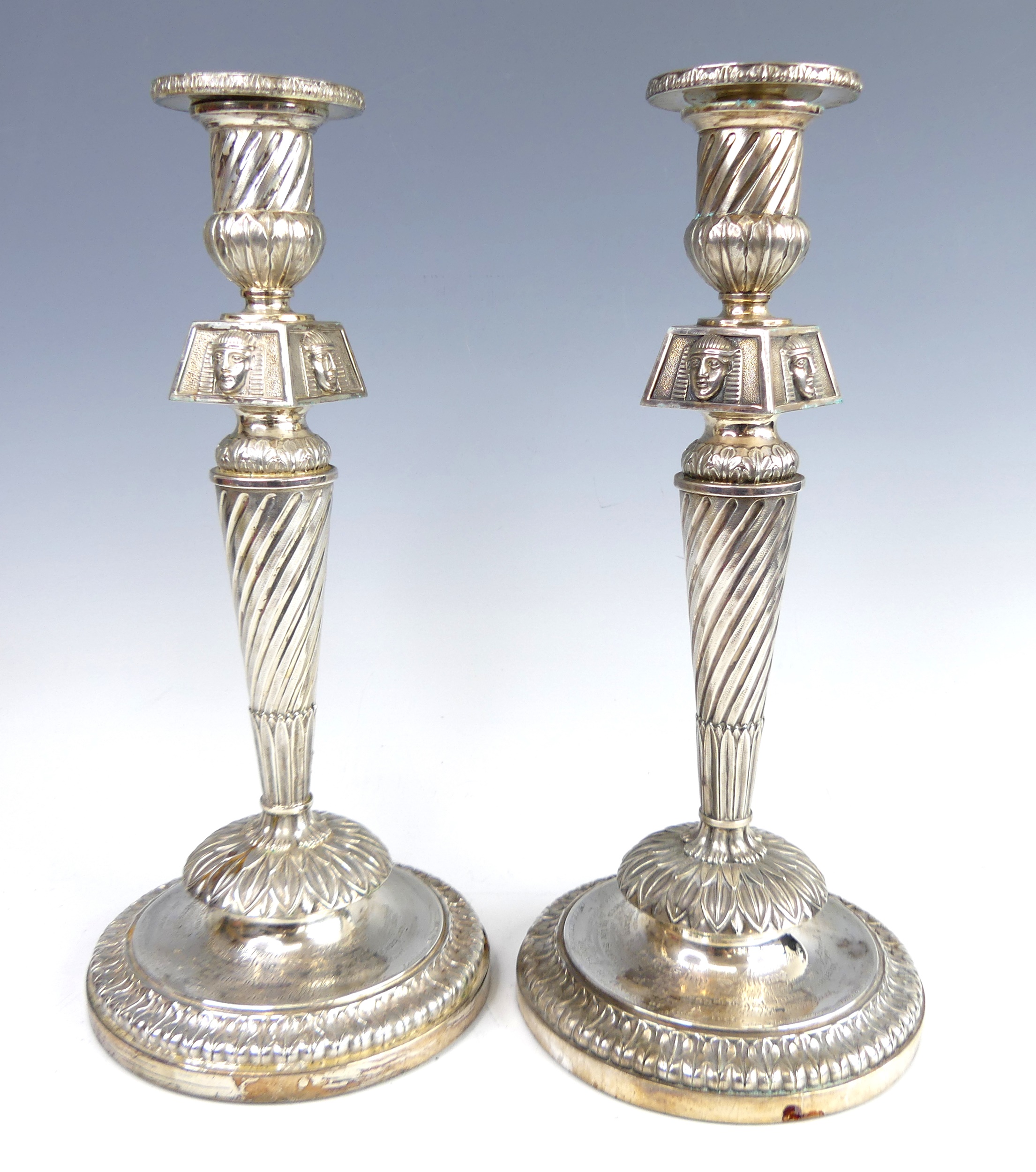
Our 14th June auction includes a pair of George III silver Egyptian pattern candlesticks engraved with an interesting inscription, the Austen family crest, and mentioned in a museum’s recently transcribed manuscript, which links the Napoleonic Wars, the East India Company and the brother of one of Britain’s most beloved novelists.
It was 1808, and the Napoleonic Wars between the French Empire forces under Emperor Napoleon Bonaparte and an ever-changing array of other European power coalitions had been raging for five years. Great Britain and her forces had been a constant part of these wars (as well as the previous Revolutionary Wars which ran from 1792-1802), and her command of the seas played a significant role from the very outset. It was essential that Britain's trade continued unimpeded by the French fleet to avoid the financial and literal starvation of this "nation of shopkeepers".
It was an era of radical economic, industrial and political change in Europe, and Great Britain had amassed possessions overseas which gave substantial trading power to this small island on the edge of the continent. A major contribution to this had been the exploits of the East India Company. Formed in 1600 by Tudor merchants and explorers looking for trade routes, by the start of the 19th century the company held a monopoly on overseas trade, with bases throughout Asia, America and the Caribbean. At points in its history, the company’s revenues would exceed those of the monarchy.
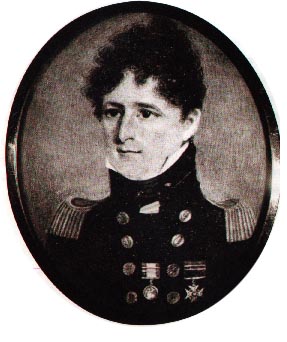
Meanwhile, a certain Francis William Austen (Frank), the 12 year old son of a Hampshire rector, joined the Royal Navy in 1786. He graduated from the Royal Naval Academy at Portsmouth and was steadily promoted while being appointed to various ships and taking part in blockades and skirmishes around the Empire. By 1805, Austen was commanding officer of HMS Canopus, a French ship of the line which had been captured in the Battle of the Nile, undertaking pursuits of the French Fleet around the West Indies and taking part in the Battle of San Domingo. He married Mary Gibson in 1806, and being without a ship at that point, took lodgings in Southampton where he was joined by his mother and sisters. Unfortunately, their father had died the previous year, leaving his mother Cassandra Austen and her daughters without a permanent home.
One of these sisters was 32 year old Jane, an aspiring writer who had already written (but not yet published) the basis of novels which would go on to become some of the best-loved literature in the English language.
Her brother's naval experiences clearly informed parts of her novels; from the naming of Francis' ships the Elephant and Canopus in Mansfield Park, to the character of Captain Wentworth in Persuasion, who was a naval officer rising through the ranks during the Napoleonic Wars.
In need of money and without a naval commission at that point, Francis was put in command of the third-rate HMS St Albans in March 1807 and commissioned to support ‘the trade’. The following February, he sailed out to St Helena to pick up a convoy for the East India Company and escort them back to England. The voyage was a success, despite being marginally involved in the start of the Peninsula War, whereby Napoleon attempted to usurp the Spanish crown and install his brother Joseph Bonaparte as king. On 20th June 1808, the St Albans log book (in the National Maritime Museum, Greenwich, collection) records "Exchanged numbers with the Raven brig. The brig is from off Lisbon. The French have taken possession of Spain. The Spanish Royal Family are prisoners in France. It is not certainly known where the Rochefort squadron is gone, but supposed into the Mediterranean.”
Later entries in August record witnessing the battle of Vimiera and employing boats to shore to take in wounded soldiers and French prisoners of war. This war, combined with Napoleon's disastrous decision to invade Russia, would prove to be the beginning of the end for the French. In 1815, St Helena became the exile and final home of Napoleon Bonaparte following his defeat at the Battle of Waterloo.
The East India Company were so pleased with Austen that they paid him £420 with which to buy a piece of plate: this was a substantial gift (perhaps the equivalent of a year's salary) in thanks for his having safely convoyed to Britain seven of their Indiamen, plus one extra (voyage chartered) ship, from St Helena.
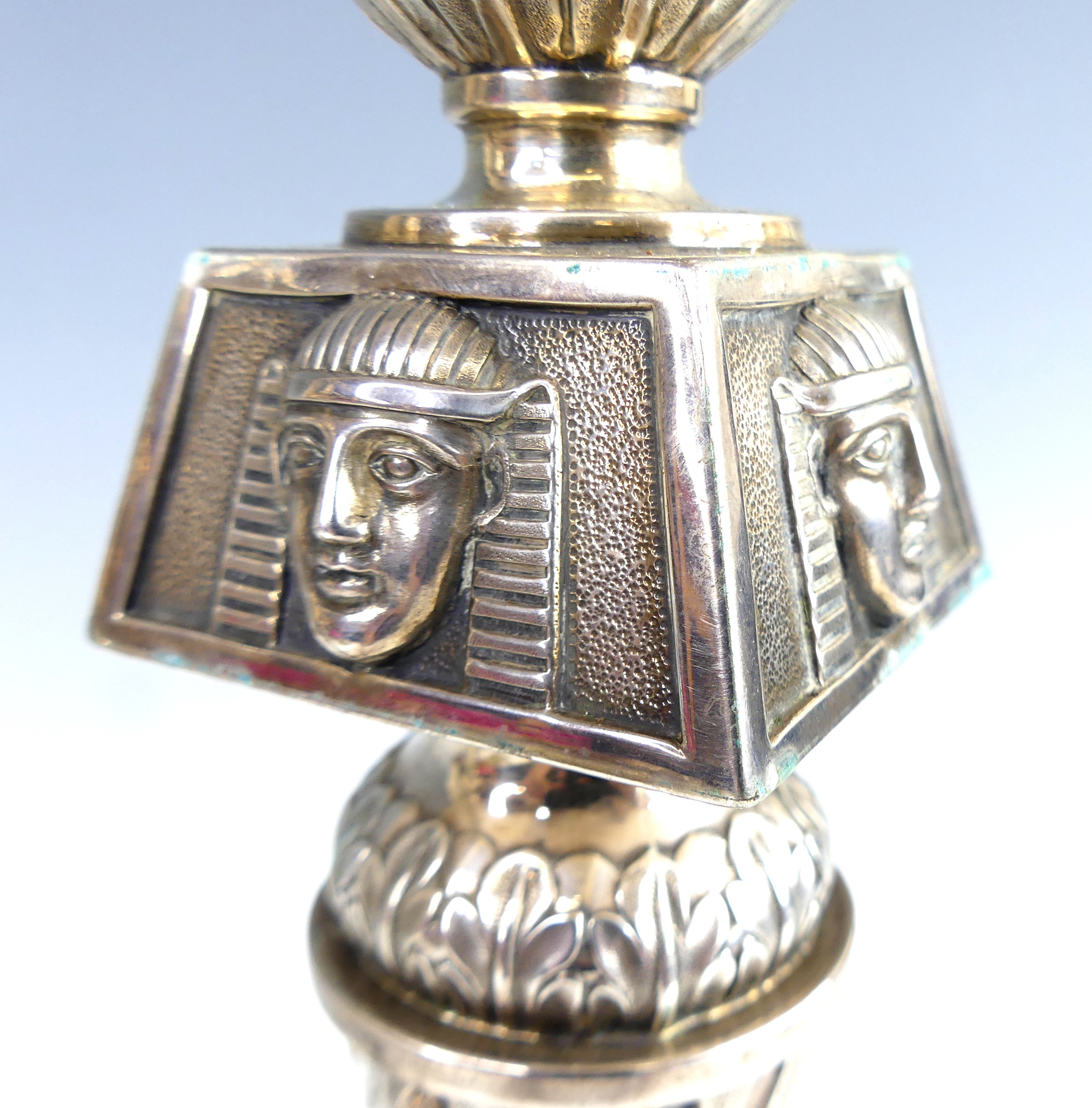
Furthermore, a biographical manuscript written by Francis Austen, which has been recently purchased and transcribed by the Jane Austen's House museum in Chawton, includes the statement: "For his attention to the Convoy, the Board of East India Directors voted him 400 guineas, as they had the beginning of the year 200 guineas on his arrival from the Cape; and the Captains of the 8 ships he conveyed, in a letter expressive of their sense of his gentlemanlike conduct to themselves, as well as his attention to the safety of the convoy, requested his acceptance of a piece of plate, as a testimony of their satisfaction and best wishes they presented him with 2 pairs of handsome Candlesticks of an Egyptian pattern."
Did these candlesticks illuminate Jane's desk while she wrote?
From the historical record, the inscription, and the Austen family crest engraved to the bases, we believe that this pair of candlesticks is one of the two pairs presented to Francis. They have been consigned from a local private vendor along with a good collection of other art and antiques.
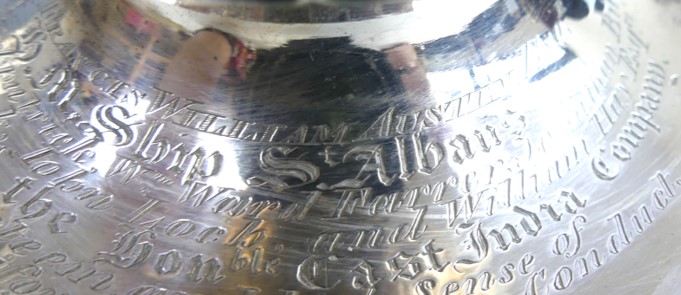
Francis Austen’s career progressed after the wars and he was eventually promoted to Admiral of the Fleet in 1863. He died two years later and was buried in Portsmouth, almost fifty years after his younger sister, Jane, passed away – never knowing that her books would rarely be out of print since their publication and that her fanbase stretches at least as far as her brothers' ships did.
The auction will take place on Saturday 14th June at 10am, with public viewing on the Thursday & Friday before. Live bidding is available, but you can also place commission bids and arrange telephone lines. Please get in touch if you would like to discuss the lot further or request extra images.
Lot description: A pair of George III silver Egyptian Revival commemorative table candlesticks, each of tapered cylindrical form to a stepped spreading foot, having palm and acanthus leaf borders, the stems having a quatraform square knop engraved with a Pharoah's head to each side, the feet engraved with a lengthy engraved presentation inscription to Captain William Francis Austen of the ship St Albans, from several commanders of the East India Company late under his orders from St Helena to England, dated London November 1808, named captains to include William Ward Farrer, William Hay, Walter Campbell, and Robert Wellbank etc, having engraved coat of arms incorporating those of Austen (chevron and bear paws), Leigh (cross from his mother's family), and Gibson (three storks from his wife’s family), with detachable sconces and weighted bases, maker John Roberts & Co, Sheffield 1806, h.34cm. Estimate £3000-4000. Extra images
Catalogue coming soon.
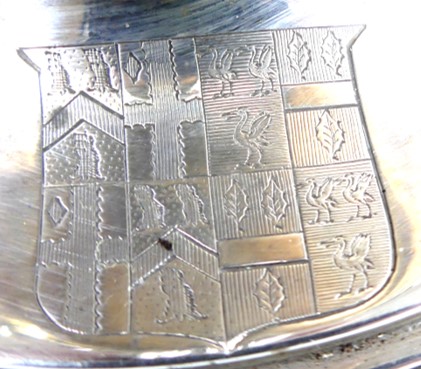
Sign up to hear about forthcoming auctions, news and featured lots
Please be assured that we will never pass your details on to third parties and you can unsubscribe at any point.

